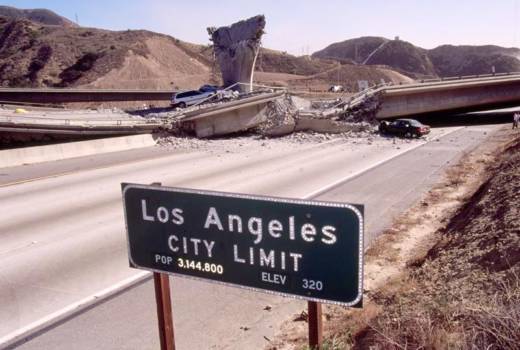As is often said, it’s not a matter of if, but of when, a large earthquake strikes the heart of one of California’s most densely populated regions. State officials and local agencies know the clock is ticking, and mile by mile, pipe by pipe, work crews are replacing or retrofitting water lines throughout much of the Los Angeles and San Francisco Bay areas. Upgrades have also been made in the Sacramento-San Joaquin Delta, the heart of the state’s water distribution system, where potential levee ruptures have made water officials uneasy for decades.
The San Andreas Fault, which generated the 1906 (7.9 magnitude) and the 1989 (6.9 magnitude) Bay Area earthquakes, could potentially produce a quake greater than 8.0. However, the Hayward Fault is widely considered the greater threat at this moment in geologic time. Scientists consider a 7.0 magnitude quake to be the largest likely to occur on the Hayward Fault, an offshoot of the San Andreas that runs through San Jose, Oakland, Berkeley and Richmond. The Hayward Fault hasn’t slipped significantly since 1868, and experts say it’s overdue for the proverbial “Big One.”
In the historical and global context, 7.0 isn’t huge, but if it strikes a heavily populated area, the damage could be significant. About 5,000 water connections that cross the Hayward Fault, as well as several critical water mains, could potentially be sheared in half by a powerful temblor, according to Richard Sykes, director of natural resources for the East Bay Municipal Utility District. That’s just within East Bay MUD’s service area. San Francisco’s water supply, sourced from Hetch Hetchy Reservoir in Yosemite National Park, also travels through large pipes that cross major East Bay fault zones. Several of its reservoirs, including Crystal Springs, San Andreas and Calaveras, sit literally on the San Andreas and Calaveras faults, with the water actually contained within the linear depressions created by these tectonic plate boundaries.
“It’s sort of a joke here that two of our reservoirs are named after faults,” said Steven Ritchie, the San Francisco Public Utilities Commission’s assistant general manager for water.
To protect the water supply of their collective 4 million customers, both East Bay MUD and the San Francisco PUC have protected their water mains with clever engineering systems that allow the earth to shift around the pipes, which range from 6 to 9ft in diameter, without damaging them. One of the San Francisco PUC’s major pipes is fitted with ball joints and slip joints that allow the steel-lined tube to shift and move without breaking.
